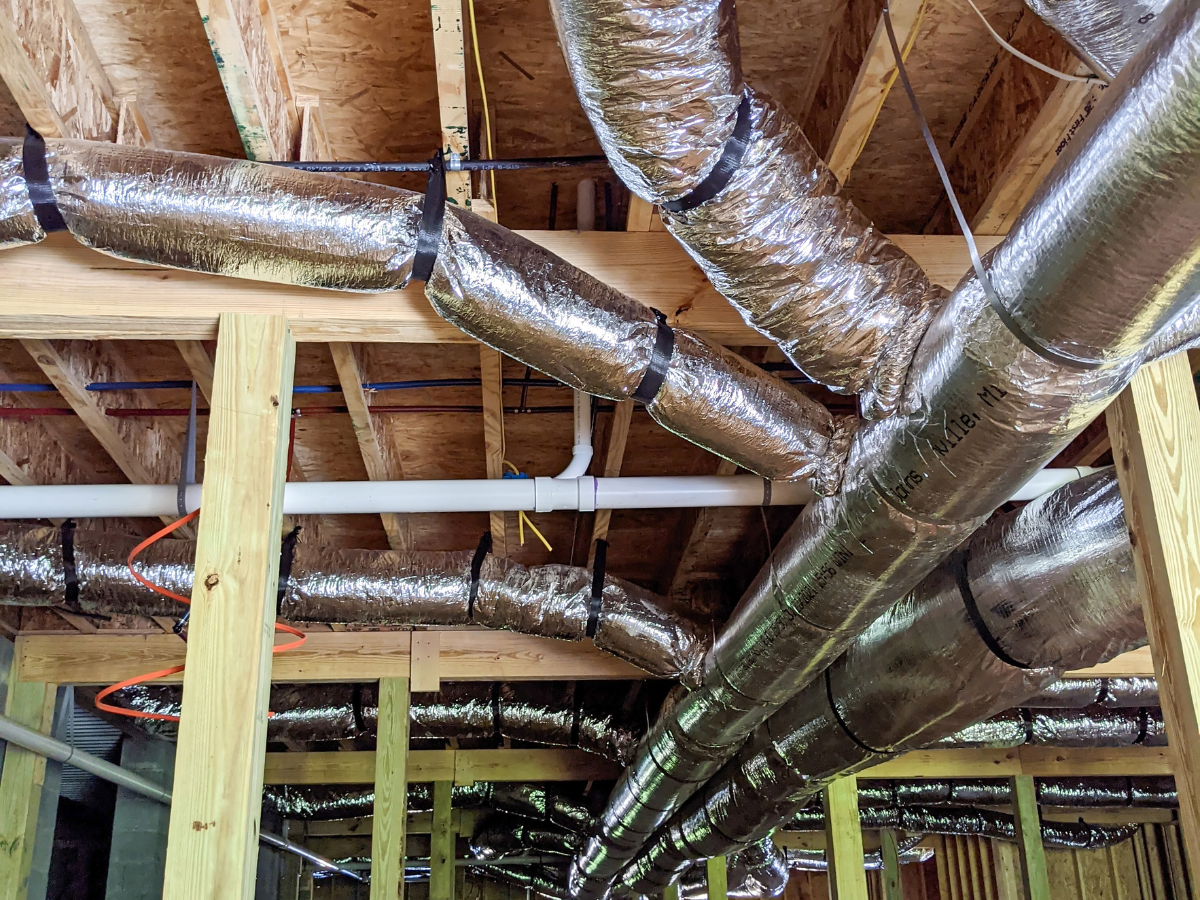If you live in an older home, you will understand the charm and unique character that they bring. But with these perks often come unexpected challenges – one big one being the installation of HVAC ductwork.
Upgrading your heating, ventilation, and air conditioning system in a vintage home isn’t just a matter of removing the old and putting in the new. There are specific hurdles you might face which require the insightful expertise of an HVAC professional.
To help you navigate this task, we’ll delve into the challenges related to installing ductwork in older homes, offering you insight and solutions. So, let’s explore why this task might be more complicated and what you can do to ensure a smooth installation process.
Remember, this isn’t a DIY project – call in one of our team members at Hurliman Heating & Air Conditioning for the best results.
What is HVAC Ductwork and How Is It Used?
HVAC ductwork refers to the network of tubes used to transport and distribute air in heating, ventilation, and air conditioning systems (HVAC).
These ducts act as conduits for air that has been heated or cooled to move around your home or commercial space and maintain an ideal temperature regardless of external weather conditions.
Metal, fiberglass and/or plastic make up most ductwork systems; depending on a building’s structure, they may be located within walls, ceilings, or floors.
Complex and layout considerations vary based on various factors, including building size, type of HVAC system in use and specific temperature and air quality requirements.
HVAC ductwork that has been thoughtfully designed and well maintained is crucial for effective temperature regulation, energy savings, and improved indoor air quality.
Always hire a professional HVAC service when installing or repairing ductwork to ensure optimal functionality and safety.
5 Challenges of Installing New Ductwork in an Old House
Installing ductwork in older homes may seem like a straightforward task, however, it comes with a number of unique challenges. Some of the challenges include the following:
#1 — Inadequate Space for Ductwork
As the name implies, ductless mini-split systems don’t require ductwork, making them ideal for older homes. They consist of an outdoor compressor/condenser and an indoor air-handling unit, which are connected via a conduit. They are energy-efficient, easy to install, and provide both heating and cooling, making them versatile.
#2 — Asbestos and Lead Paint
These harmful materials were widely used in construction until the late 20th century. If your home was built before 1978, there’s a chance these materials could be present, making it important to conduct a thorough inspection before installation begins to ensure the safety of all involved.
#3 — Insufficient Insulation
Older homes typically have less insulation than modern homes, which can lead to loss of conditioned air and decreased HVAC system efficiency. This may require additional insulation installation during the HVAC upgrade.
#4 — Historical Preservation
If you own an older home, you most likely want to protect the original architecture. Special care should be taken while installing ductwork in older homes to ensure that the work complies with potential requirements.
#5 — Existing Infrastructure
Outdated electrical and plumbing systems can interfere with the installation of HVAC ductwork. These elements may need to be upgraded or rerouted, adding complexity and cost to the project.
Remember, dealing with these challenges requires professional expertise. Rather than attempting to tackle these obstacles on your own, seek the help of qualified HVAC professionals.
6 Solutions for Homeowners Who Can’t Install HVAC Ductwork in Their Old Homes
Here are several solutions for homeowners who can’t install HVAC ductwork in their old homes:
#1 — Ductless Mini-Split Systems
As the name implies, ductless mini-split systems don’t require ductwork, making them ideal for older structures. These handy systems consist of an outdoor compressor/condenser and an indoor air-handling unit, which are connected via a conduit. They are energy-efficient, easy to install, and provide both heating and cooling, making them versatile.
#2 — High-Velocity Mini-Duct Systems
These systems can fit into much smaller spaces than traditional ductwork, making them perfect for older homes. They work by forcing air at a high velocity through small, flexible tubes. While slightly more invasive to install than ductless systems, they can be less noticeable once installation is complete.
#3 — Radiant Heating
This system provides heat by warming the floors, walls, or ceilings using panels. It’s an excellent option for homes with insufficient space for ductwork. Radiant heating is efficient and can provide a consistent temperature throughout the home.
#4 — Portable Air Conditioners
Portable air conditioners can be an effective option if a simpler solution is desirable. These units can cool individual rooms and can easily be moved from one part of the house to another.
#5 — Window Units
Another non-invasive option, window units provide both heating and cooling. They’re an affordable, efficient solution but are best for smaller homes as each unit can only condition a single room.
#6 — Geothermal Heat Pumps
While they require a significant upfront investment, geothermal heat pumps are incredibly efficient and sustainable. They work by leveraging the consistent temperature of the earth.
Remember, every home and situation is unique, and what works best for one may not work for another. Always consult with an experienced HVAC professional before making a decision.
Challenges of Installing HVAC Ductwork in Older Homes — Conclusion
All in all, installing HVAC systems in older homes can present a unique set of challenges that require expert intervention. From dealing with inadequate space and harmful materials to ensuring historical preservation and navigating existing infrastructure, these complexities make it critical to involve professionals.
Fortunately, solutions are available for homes where traditional ductwork may not be feasible, including ductless mini-split systems, high-velocity mini-duct systems, radiant heating, portable air conditioners, window units, and geothermal heat pumps.
It’s essential to consult with experienced HVAC professionals to identify the solution that best suits your needs. If you’re in Spokane Valley, WA, and need expert consultation or services, don’t hesitate to reach out to Hurliman Heating & Air Conditioning. Our team of professionals will help ensure your home is comfortable and efficient, while preserving its timeless charm. Call us today to learn about our financing options!






